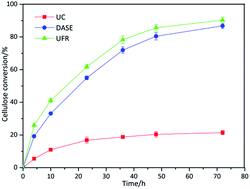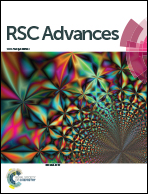Comparison of ultrasound-assisted Fenton reaction and dilute acid-catalysed steam explosion pretreatment of corncobs: cellulose characteristics and enzymatic saccharification
Abstract
As an emerging method for lignocellulose pretreatment, the ultrasound-assisted Fenton reaction is not well developed in comparison to the dilute acid-catalysed steam explosion. In this work, ultrasound-assisted Fenton reaction and dilute acid-catalysed steam explosion were investigated to evaluate their different effects as the pretreatment methods. The changes of cellulose characteristics were analysed by X-ray diffraction, 13C CP/MAS solid state NMR, water retention value, Simons' staining and scanning electron microscopy. It was indicated that ultrasound-assisted Fenton reaction removed more lignin and created slightly more accessible area and pores on the surface of the substrate compared with dilute acid-catalysed steam explosion. After 72 h of enzymatic hydrolysis, the conversion of cellulose from ultrasound-assisted Fenton reaction and dilute acid-catalysed steam explosion pretreatment reached 90.34% and 86.80% of the theoretical value, respectively, which indicated ultrasound-assisted Fenton reaction had the same capacity of pretreatment as dilute acid-catalysed steam explosion.


 Please wait while we load your content...
Please wait while we load your content...